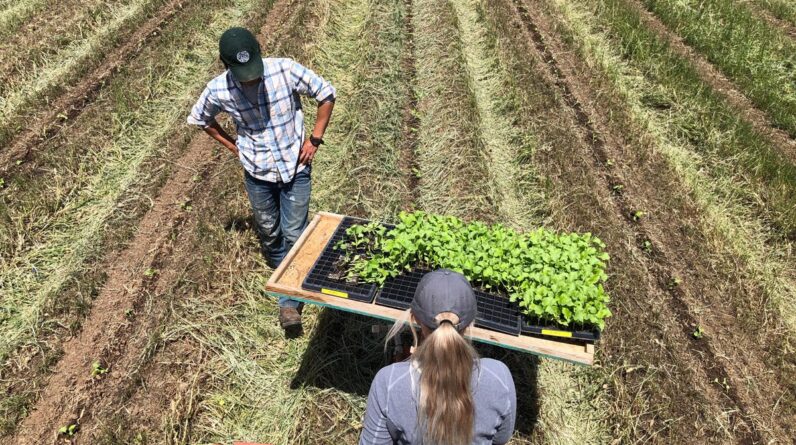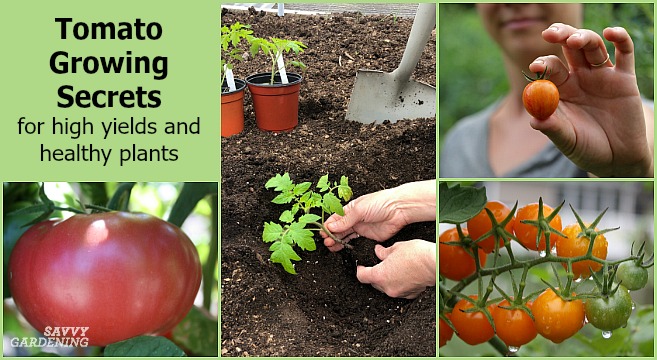
World Soil Day is celebrated on December 5th to raise awareness about the importance of soil for the planet’s health. Introducing World Soil Day: A day dedicated to highlighting soil’s vital role in supporting life on Earth.
On December 5th of each year, individuals and organizations unite to raise awareness about the importance of soil conservation and sustainable soil management practices. As the foundation of agriculture and the source of essential nutrients and water for plants, soil plays a critical role in food security, biodiversity, and climate change mitigation.
With the theme “Keep soil alive, protect soil biodiversity,” World Soil Day aims to promote actions that preserve soil health, encourage sustainable land management, and safeguard the future of our planet. Together, let’s recognize the significance of soil and work towards its preservation for future generations.
The Importance Of World Soil Day
Soil plays a vital role in agriculture as it directly impacts crop productivity. Healthy soil is essential for sustainable food production and global food security. It provides important nutrients, water, and support for plant growth while acting as a natural filter for water, protecting groundwater resources. Factors such as soil fertility, pH levels, and organic matter content greatly influence soil health and its ability to support plant growth.
On a global scale, World Soil Day is of significant importance as it raises awareness about the crucial role of soil in sustaining life and preserving soil health. The day highlights the need for sustainable soil management practices to combat issues like soil erosion, land degradation, and nutrient depletion. Celebrated annually on December 5th, World Soil Day encourages individuals, organizations, and governments to take active measures to protect and enhance soil health for a better future.
Understanding Soil Health
Understanding soil health is crucial for sustainable agriculture and environmental conservation. Healthy soil consists of various components that contribute to its fertility and productivity.
Organic matter is vital to soil health as it improves soil structure, moisture retention, and nutrient availability. It provides a source of essential nutrients for plant growth and acts as a habitat for beneficial soil organisms.
Soil pH and nutrient levels also play a significant role in determining soil health. Proper pH levels ensure optimal nutrient availability to plants, promoting healthy growth and development. Imbalances in nutrient levels can lead to nutrient deficiencies or toxicities, affecting plant health.
The impact of soil texture on fertility is another essential factor to consider. Soil texture refers to the soil’s relative composition of sand, silt, and clay particles. Each surface has different water-holding and nutrient-retention capacities, affecting plant growth.
Secrets To Maintaining Healthy Soil
The secret to maintaining healthy soil lies in effective soil testing and analysis, organic farming practices, crop rotation, cover cropping, and integrated pest management techniques.
Soil testing and analysis are crucial for understanding the soil’s nutrient content and pH level. This helps determine the type and quantity of fertilizers and amendments required for optimal plant growth.
Organic farming practices, such as using compost and organic fertilizers, help enhance soil fertility and improve its structure. These practices also encourage the development of beneficial soil microorganisms that aid in nutrient cycling.
Crop rotation and cover cropping are essential for preventing soil erosion, improving soil structure, and controlling weeds and pests. They also help reduce the risk of nutrient depletion and increase the availability of essential nutrients for different crops.
Integrated pest management techniques involve a holistic approach to pest control, focusing on prevention and using natural methods, such as beneficial insects and biological controls. This minimizes the use of chemical pesticides and preserves the health of the soil.
By incorporating these practices into your gardening or farming routine, you can maintain healthy soil that supports thriving plants and sustainable agriculture.
The Role Of Soil Conservation
Erosion prevention methods play a crucial role in soil conservation. One effective way is terracing, which involves creating level platforms on sloped land to break water flow and reduce erosion.
Contour plowing is another crucial technique, where furrows are plowed across the slope of the land to trap water and prevent runoff. Windbreaks and shelterbelts are also essential in soil conservation, as they provide a barrier against strong winds that can strip away topsoil.
These natural windbreaks can be created by planting rows of trees or shrubs perpendicular to the wind direction. Lastly, implementing conservation tillage practices like no-till or reduced tillage helps retain organic matter and prevent erosion. Conservation tillage reduces soil erosion risk by avoiding unnecessary soil disruption and promotes long-term soil health and productivity.
The Role Of Soil Amendments
Using soil amendments is vital in improving soil health and crop productivity. Two commonly used amendments are compost and manure. Compost, decayed organic matter, provides numerous benefits to the soil.
It helps retain moisture, improves soil structure, and increases nutrient availability. Similarly, manure, which is animal waste, is an excellent source of organic matter and nutrients. Manure enhances soil fertility and promotes microbial activity when applied to the soil.
In addition to compost and manure, green manure cover crops can improve soil health. These cover crops are grown specifically to add organic matter to the soil when they are incorporated. They help prevent soil erosion, suppress weed growth, and provide nutrients to the ground as they decompose.
Another effective soil amendment is biochar, a charcoal-like substance produced from burning organic material in a low-oxygen environment. Adding biochar to the soil helps improve its structure, increase nutrient retention, and enhance water-holding capacity.
Incorporating natural amendments like compost, manure, green manure cover crops, and biochar can significantly improve soil fertility and contribute to sustainable agricultural practices.
Sustainable Water Management
World Soil Day is a significant event that aims to raise awareness about the importance of sustainable water management. Water conservation plays a crucial role in ensuring the health and longevity of our planet. Efficient irrigation practices are essential in maximizing water usage and minimizing wastage. By utilizing technology such as drip irrigation or precision sprinklers, we can deliver water directly to plant roots, reducing evaporation and runoff.
Managing water runoff and drainage is another critical aspect of sustainable water management. Properly designed systems can capture and store excess water, preventing soil erosion and contamination of water bodies. Implementing measures like terracing or constructing retention ponds can help control the water flow and reduce the risk of flooding.
Rainwater harvesting techniques offer a sustainable solution to conserve water. Collecting rainwater from rooftops or other surfaces allows us to store and utilize it for various purposes, such as irrigation or household needs. Installing rain barrels or constructing rain gardens are effective ways to capture and use this valuable resource.
Promoting Biodiversity In Soil
Soil biodiversity plays a crucial role in maintaining a healthy ecosystem. Encouraging beneficial soil organisms is an essential strategy for promoting biodiversity in the soil. Earthworms, fungi, and bacteria are crucial to a thriving soil community.
Earthworms, with their tunneling activities, improve soil structure and nutrient availability. Fungi, including mycorrhizal fungi, form mutualistic relationships with plants, aiding nutrient uptake and promoting plant growth. Bacteria contribute to nutrient cycling and organic matter decomposition.
To enhance soil health, utilizing crop diversity is essential. Planting various crops helps prevent soil nutrient depletion and reduce pest and disease pressure. Different crops have varying root systems, which results in a diverse range of organic material entering the soil. This, in turn, supports a more excellent array of soil organisms, contributing to overall soil health.
Promoting mycorrhizal fungi colonization is another essential strategy to enhance soil biodiversity. These fungi form symbiotic associations with plant roots, aiding in nutrient uptake. Increasing mycorrhizal fungi colonization can improve soil fertility and plant productivity.
Educational Initiatives For Soil Health
World Soil Day is an important event that aims to raise awareness about the significance of soil health and promote educational initiatives. One of the key ways to create awareness is through campaigns highlighting the importance of soil conservation and sustainable land management practices.
These campaigns can use various mediums, such as social media, posters, and videos, to reach a broad audience and educate them about the importance of soil health.
In addition to campaigns, soil health workshops and seminars are vital in educating individuals about the various aspects of soil health and the importance of soil conservation. These workshops provide participants with practical knowledge and hands-on experience, helping them understand the significance of soil health management.
A practical method of promoting soil education is by integrating it into schools’ curricula. Students can learn about the importance of soil health from an early age by including soil health and conservation topics in subjects like science and geography. This integration helps create a foundation for sustainable practices and encourages students to become responsible stewards of the land.
Farmer training programs also play a crucial role in promoting soil health. These programs provide farmers with the necessary knowledge and skills to implement sustainable farming practices, including soil conservation techniques. By equipping farmers with the right tools and methods, they can optimize their agricultural practices while minimizing soil degradation.
Collaborative Efforts For Soil Conservation
Collaborative efforts for soil conservation are crucial in tackling the global challenge of maintaining soil health. International organizations are pivotal in promoting awareness and advocating for sustainable soil practices.
Organizations like the Food and Agriculture Organization (FAO), the United Nations Environment Programme (UNEP), and the World Bank Group actively support initiatives to protect and restore soil quality.
Governments worldwide recognize the importance of soil conservation and implement initiatives and policies to address this issue. They create regulations and guidelines to promote responsible land management and prevent soil degradation.
Public-private partnerships are also instrumental in achieving sustainable agriculture. By collaborating with various stakeholders, including farmers, businesses, and non-governmental organizations (NGOs), these partnerships support adopting environmentally friendly practices and developing innovative solutions.
A united global effort is needed to achieve the soil conservation goals set by international organizations. By sharing knowledge, implementing best practices, and investing in research and development, we can protect the invaluable resources of our soils and ensure a sustainable future for generations to come.
Celebrating World Soil Day
World Soil Day is a momentous occasion to raise awareness about the significance of soil for our planet’s sustainability. Participating in local events and activities is an excellent way to celebrate this day.
Community tree plantations can help improve soil quality and prevent erosion. By supporting sustainable agricultural practices, we can ensure the long-term health of our soils. Spreading awareness through social media campaigns is another effective strategy to reach a wider audience.
By joining hands on World Soil Day, we can contribute to conserving and restoring soil resources. It is crucial to recognize the role of soil in providing essential ecosystem services, such as food production, water filtration, climate regulation, and biodiversity conservation. Let’s cooperate to protect and nurture our invaluable soil resources for future generations.

Credit: savvygardening.com
Frequently Asked Questions Of World Soil Day
What Is The Theme For World Soil Day 2023?
The theme for World Soil Day 2023 has not been announced yet. Please stay updated for the official announcement.
What Is The Purpose Of World Soil Day?
World Soil Day is celebrated to raise awareness about the importance of soil for food security, agriculture, and climate change adaptation. It highlights the need to protect and sustainably manage our soil resources for a better future.
How Can We Celebrate Soil Day?
Celebrate Soil Day by promoting awareness, planting trees, composting, reducing chemical use, and participating in local initiatives.
What Is The Slogan For World Soil Day?
The slogan for World Soil Day is “Keep soil alive, protect soil biodiversity.”
Conclusion
World Soil Day reminds us of soil’s crucial role in sustaining life on our planet. Creating awareness and promoting sustainable soil management practices can build a healthier and more resilient future for future generations.
Let’s recognize the significance of soil in supporting food security, biodiversity, and climate action and work towards preserving this invaluable resource. Together, we can make a positive impact on the health of our planet.






